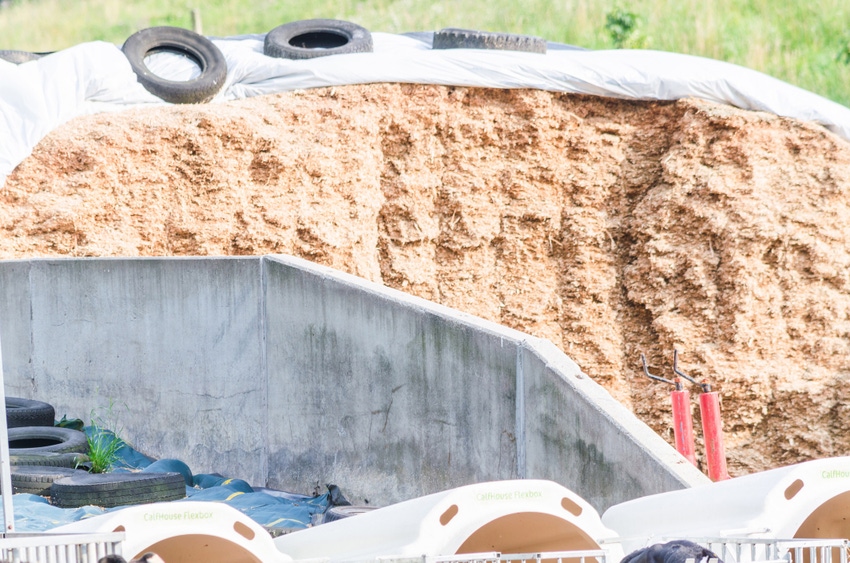Full-casing waste tires may be restricted for use on silage bunkers in some areas, but other options exist.
April 10, 2019

Recent regulations may change how some U.S. dairy producers weigh down their silage covers, yet the benefits of properly covering silage bunkers or piles continue to provide returns, according to an update from Lallemand Animal Nutrition.
“The additional time and expense to comply with new waste tire regulations may cause producers to question the need for covering piles at all,” noted Renato Schmidt, technical services-silage, Lallemand Animal Nutrition. “There is absolutely no question that effectively covering piles saves money by preserving important nutrients in the silage, reducing dry matter (DM) losses and maintaining the hygienic quality of the feed. The effort to cover and seal silage piles is a vital part of the silage management program.”
Covering piles helps create the anaerobic environment required for the ensiling fermentation on the most critical portion in terms of porosity: the surface. As a result, the quality of the fermentation process is improved compared to uncovered piles, Lallemand said. During storage, well-maintained plastic covers help prevent oxygen ingress, which can cause spoilage.
For example, sealing and covering a 40 ft. x 100 ft. bunker returns approximately $2,000 in improved silage DM recovery when filled with corn silage. Feeding spoiled silage from an uncovered silo, on the other hand, can reduce feed intake and digestibility and potentially lead to metabolic and reproductive issues in the herd, Lallemand added.
A combination of high-quality plastic and adequate weighting helps prevent losses. Use plastic that is at least 5 mm thick and dual layer — black inner and white outer — to resist deterioration. Also, consider using plastic film with an increased oxygen barrier, Schmidt suggested.
Weighting down the plastic prevents air from seeping underneath the covering. Full-casing waste tires have been the standard for anchoring bunk silo covers for years, but they are heavy to move and bulky to store, Lallemand said. Also, any standing water in a full-casing tire can be a breeding ground for mosquitoes. With increasing concerns about West Nile virus (WNV) — and new state regulations prohibiting full tires — producers may be searching for new options, such as:
Modifying tires by leaving them on the rims, removing tire sidewalls, drilling holes in the sidewalls or cutting tires in half;
Covering tires with plastic to reduce standing water;
Treating tires with a mosquito larvicide, which requires a certified pesticide applicator;
Replacing tires with sidewall disks;
Using heavy equipment tire beads, and
Finding alternatives to tires, such as gravel or sandbags.
Schmidt advised producers to choose an option that maintains the integrity of the plastic. Tears or holes reduce the effectiveness of the covering and allow oxygen into the pile, he added.
“Covering and sealing silage bunkers makes economic sense,” Schmidt said. “There are options for producers looking for alternative ways to weigh down covers. Don’t drop a best practice that pencils out in the long run.”
Source: Lallemand Animal Nutrition, which is solely responsible for the information provided and is wholly owned by the source. Informa Business Media and all its subsidiaries are not responsible for any of the content contained in this information asset.
You May Also Like



